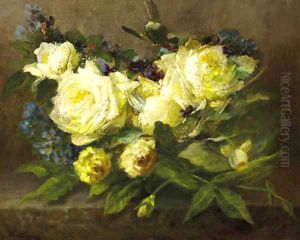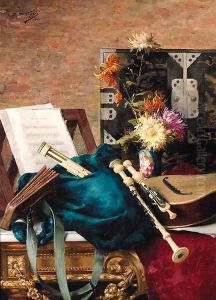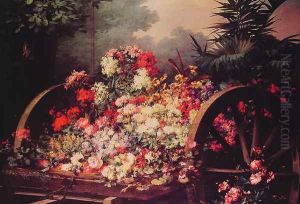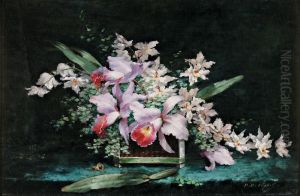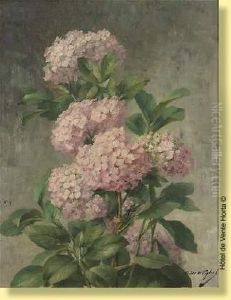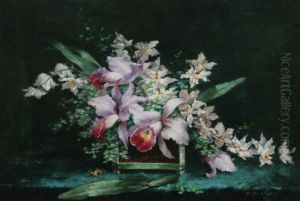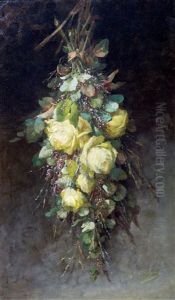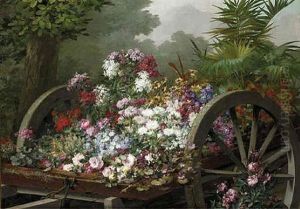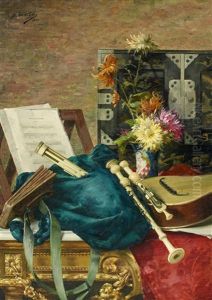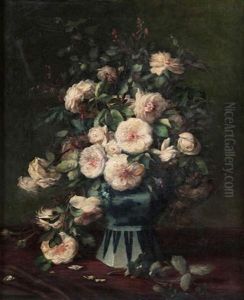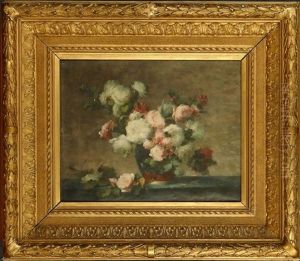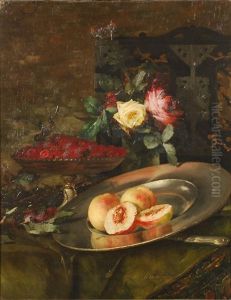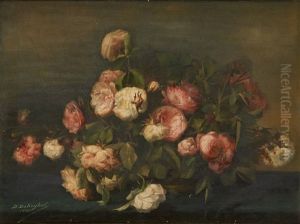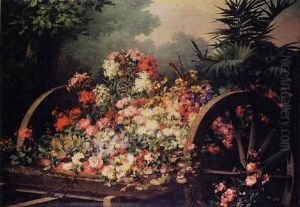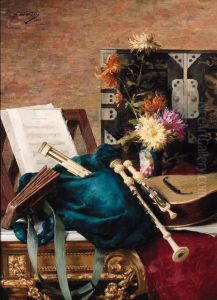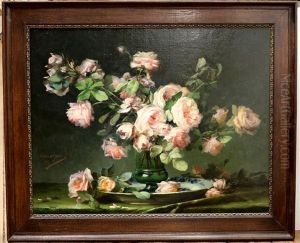Desire de Keghel Paintings
Désiré de Keghel was a Belgian artist known for his contributions to the world of sculpture during the late 19th century. Born on October 23, 1839, in Ghent, Belgium, de Keghel showed an early interest in the arts, which was nurtured by his environment and the artistic heritage of his homeland. Belgium during this period was a place of rich cultural activity, with a strong tradition in painting, sculpture, and architecture that undoubtedly influenced the young artist.
De Keghel pursued his artistic education at the Royal Academy of Fine Arts in Ghent, where he was trained in classical sculpture techniques. This educational background provided him with a solid foundation in the principles of form, proportion, and the human figure, elements that would become central to his work. After completing his studies, de Keghel traveled throughout Europe, including stays in Italy and France, where he was exposed to a variety of artistic styles and movements. These experiences broadened his perspective and enriched his artistic vocabulary, allowing him to develop a distinctive style that blended classical elements with the emerging trends of his time.
Throughout his career, Désiré de Keghel produced a significant body of work that included public monuments, portraits, and allegorical sculptures. His works were characterized by their detailed execution, expressiveness, and the ability to capture both the physical and psychological likeness of his subjects. De Keghel's sculptures often reflected the societal changes and intellectual currents of the late 19th century, making his work not only aesthetically pleasing but also culturally and historically relevant.
De Keghel was recognized by his peers and the public alike, receiving numerous commissions for public monuments and memorials that are still appreciated today. Despite his success, he remained dedicated to his craft, continually striving to perfect his technique and explore new artistic possibilities.
Désiré de Keghel passed away on December 21, 1900, leaving behind a legacy that has continued to be celebrated for its contribution to Belgian art and sculpture. His works remain a testament to the skill, creativity, and vision of one of Belgium's most talented sculptors of the 19th century.
